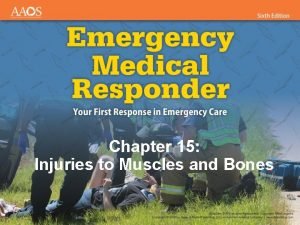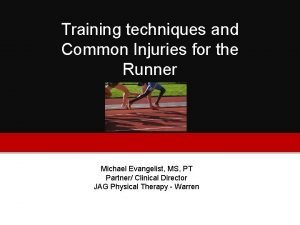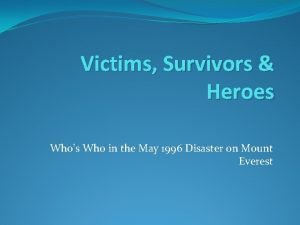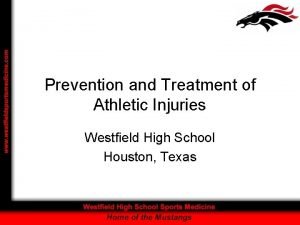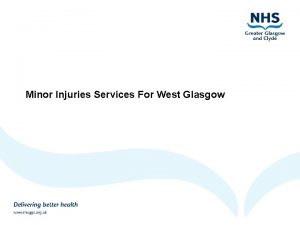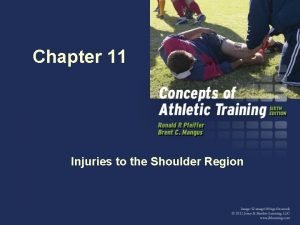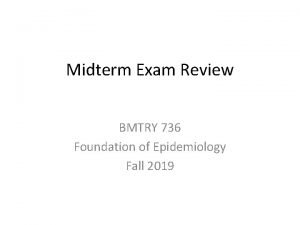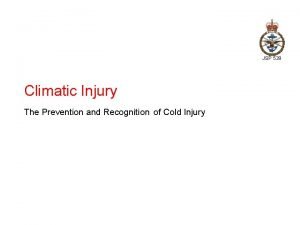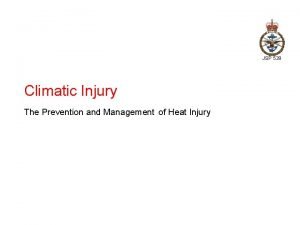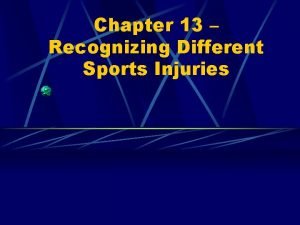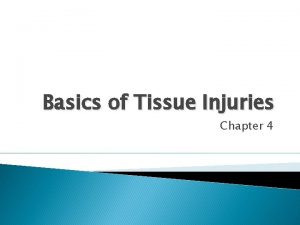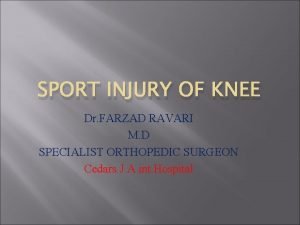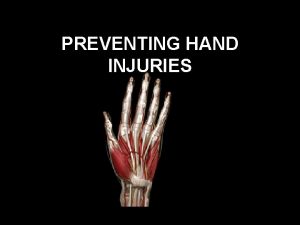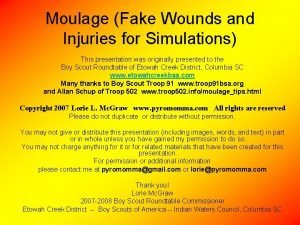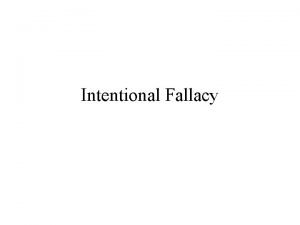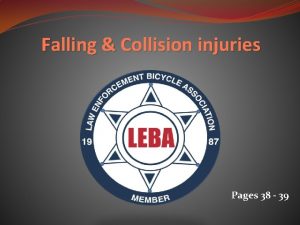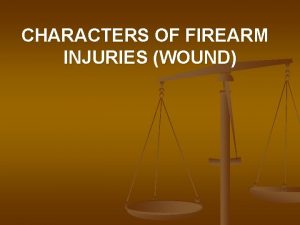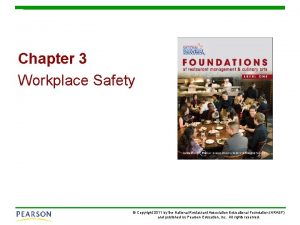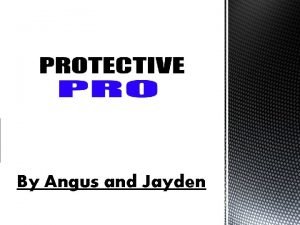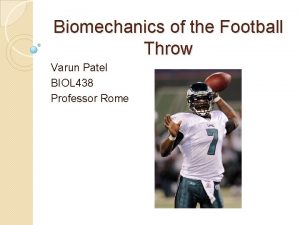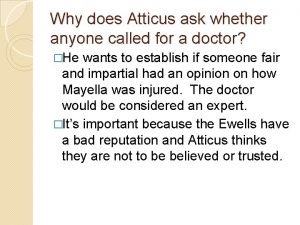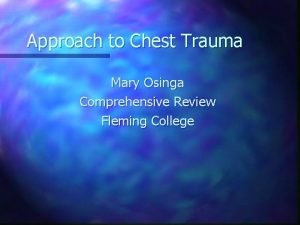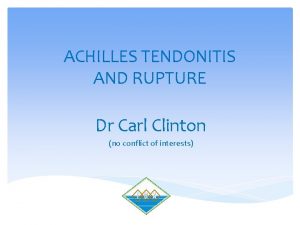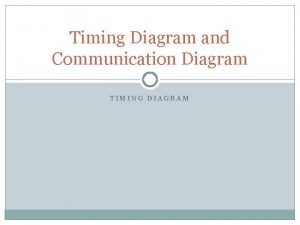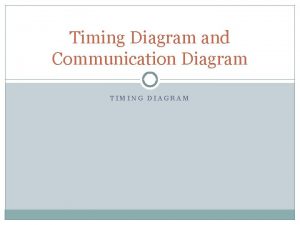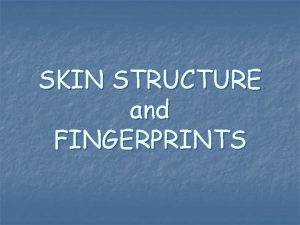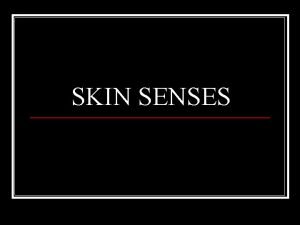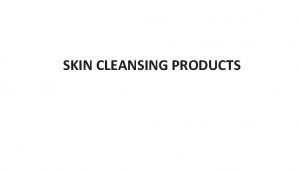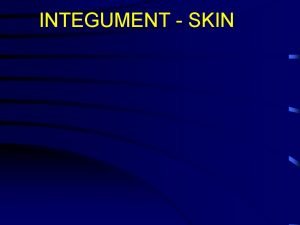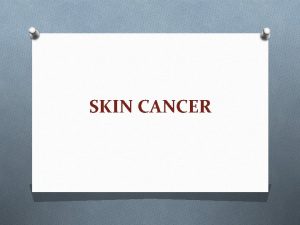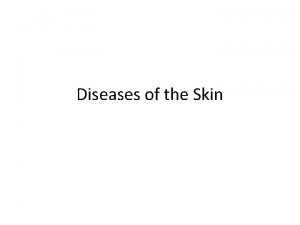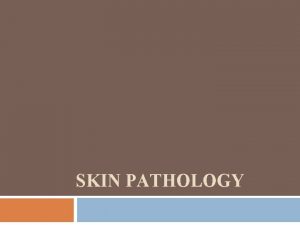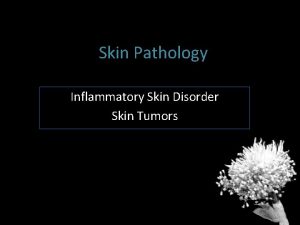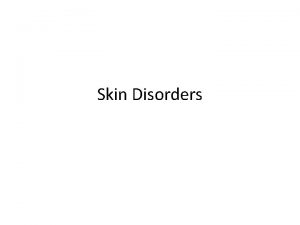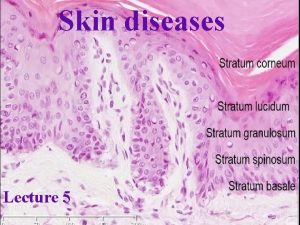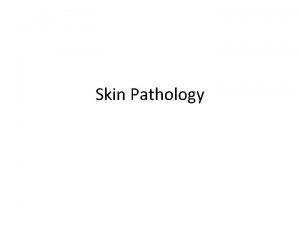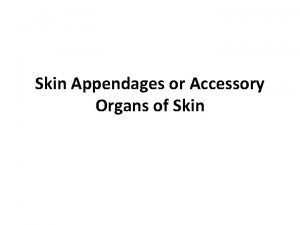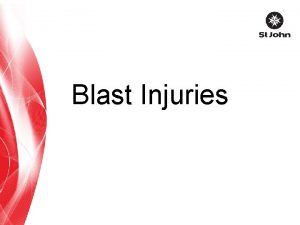Skin injuries can we determine timing and mechanism

















































- Slides: 49

Skin injuries – can we determine timing and mechanism? Jo Tully VFPMS Seminar 2016

What skin injuries do we need to consider? • Bruising • Commonest accidental and inflicted skin injury • Sentinel injury • Basic principles that can be applied when formulating opinion • • • Abrasions Lacerations } accurate differentiation important Incisions Stabs/chops Bite marks – animal v human / inflicted v ‘accidental’ v self-inflicted

Our role…. We are often/usually/always asked……………. . • “What type of injury is it? ” • “When did this injury occur? ” • “How did this injury occur? ” • “Was this injury inflicted or accidental? ” • IS THIS CHILD ABUSE? • To be able to answer these questions (if we can) we need knowledge of • • Anatomy/physiology/healing - injury interpretation Forces Mechanisms in relation to child development, plausibility of story Current evidence

Bruising – can we really tell which bruises are caused by abuse?

Definitions – bruising • BLUNT FORCE TRAUMA • Bruise =bleeding beneath intact skin due to BFT • Contusion = bruise in deeper tissues • Haematoma - extravasated blood filling a cavity (or potential space). Usually associated with swelling • Petechiae =Pinpoint sized (0. 1 -2 mm) hemorrhages into the skin due to acute rise in venous pressure • medical causes • direct forces • indirect forces

Medical causes Direct mechanical forces Indirect mechanical forces

Factors affecting development and appearance of a bruise • Properties of impacting object or surface • Force of impact • Duration of impact • Site - properties of body region impacted (blood supply, underlying bone, tissue planes) • Quantity of blood extravasated • Depth of bruise • Age and health of individual (medications, coagulation status) • Skin colour So…. multiple bruises sustained at the same time can all appear different

Myths about bruising! • Age - can we accurately age a bruise? • The site of the bruise is the site of the trauma? • Does the shape of the bruise reflect the shape of the implement? • Size - the bigger the bruise, the greater the force? No injury on the outside does not mean no injury on the inside

Timing – what do we know? • • Superficial bruises appear almost at once Deep bruises may not appear for hours/days Red may actually appear at any time Bruises of same age on same person may be different colours and may change at different rates • Yellow >18 hours but perception is individual • No yellow does not mean bruise is <18 hours The ageing of bruises; A review and study of the colour changes with time For Sci Int 1991

So what can we say…. ? • Description; • Location (anatomical position, landmarks), orientation, contouring • Underlying structures • Dimensions, colour and pattern • Mechanism is blunt force trauma • Timing • • Tenderness Swelling Limitation of function or movement Presence of yellow • Evidence based statements about distribution, location, pattern

Mimickers…. • Mongolian blue spots, haemangiomas, cultural practices, accidental bruising, texta! • Coagulation disorders, ITP • Sepsis, DIC • Malignancy • Drug ingestion • Vitamin K and C deficiencies • HSP, other vasculitis, CT disorders, striae • Erythema nodosum, erythema multiforme • Haemorrhagic oedema of infancy

Do we always investigate? Which bloods when? Which other tests and when? In all bruised children where NAI is suspected? • Older children, clear Hx, no red flags, patterned bruises – probably not indicated • Younger children, widespread distribution, Hx unclear or suspicious for coag disorder • Commonest acquired is ITP, commonest inherited is VW disease • Remember children with a clotting disorder can also be abused • The indications for further Ix? Skeletal Survey and Bone Scan

First line Ix • FBE and film • PT, APTT, INR and Fibrinogen • Von Willebrand Fx antigen/activity and blood group • LFT, Ca and renal function (2 ary platelet dysfunction) • Factors 8, 9, 11 (13 in neonates) • Role of PFA 100. . ?

Indications for skeletal survey in children under 2 years of age presenting with bruising SS is necessary in children <24 months with bruising if any of following features are present; History of confessed abuse History of bruising occurring during family violence Additional injuries on examination (eg burns, whip marks, bites) Patterned bruising > 4 bruises away from bony prominences Ear, neck, torso, buttocks, genital region, hands, feet if no Hx of trauma SS is also necessary in children < 12 months with bruising in following locations; Cheeks, eye area, ear, neck Upper arms or legs (not over bony prominences) Hands, feet Torso, buttocks, genital region > 1 bruise away from bony prominence SS is also necessary in children < 9 months old with bruising in the following locations; > 1 bruise in any location SS is also necessary in children < 6 months old with bruising in the following locations; Bony prominences (T-zone, frontal scalp, extremity bony prominences) EXCEPT if single bruise and Hx of fall

So which bruises are inflicted? • Sometimes its bleeding obvious…… • And sometimes it’s not…. .

Important factors – what we need to consider • Age • Developmental stage – can they do what carers are saying they can do? • Location of bruises • Number of bruises • Pattern/shape of bruises • Social background - previous DHHS CP involvement

Archives Disease Childhood Welsh child protection group 2014 – “Bruising in children who are assessed for suspected physical abuse” >500 children, <6 years assessed for PA • Prevalence, number & characteristics vary between abused and non-abused • Greater OR for bruising to buttocks/genitals (10. 9), ear (7. 1), cheeks (2. 8 -5. 2), neck (3. 7), trunk(2. 8 -4. 7), thighs (2. 5), upper arms (1. 9) • More sites affected (p=<0. 001) • Petechial, linear, patterned, clustered > in PA • Other injuries, previous CP involvement > in PA Kemp AM et al Arch Dis Child 2014; 99: 108 -113

Archives Disease Childhood Welsh child protection group 2015 – “Patterns of bruising in preschool children: a longitudinal study” 328 children < 6 years with 3523 bruises - 12 weeks • Can affect babies that are not rolling but rare (2%) • Bruising rare on the ears, neck , genitals, and hands in all children • Bruising also rare on buttocks and front trunk in early and premobile children • Below knee, facial T and head commonest accidental • 9% children had twice as many bruises as would be ‘expected’ • Level of social deprivation did not affect bruising pattern, having a sibling did

1. Age of child • Children sustain more bruises as they get older • Uncommon in non-mobile infants • 17% of infants who cruise will bruise • 52% of children who are walking have bruises • Non-ambulatory – RED FLAG

2. Location of bruises Inflicted • Away from bony prominences • Face/neck (cheeks), back, abdomen, arms, buttocks, ears, genitalia, hands and feet • TEN concept – children under 4 - Torso, Ears, Neck Accidental • Anterior aspect of body • Bony prominences eg forehead (T-zone), knees, shins

Inflicted or accidental?

Inflicted or accidental?

And now…?

3. Number of bruises Arch Dis Child 2015; number and range of bruises by developmental stage • • Pre-mobile 0 -11 months Early mobile 4 -18 months Walking 10 -36 months Walking 37 -70 months Range 0 -3 Range 0 -7 Range 0 -14 Range 0 -16 Median 0 Median 2 Median 3 90 th. C 0 90 th. C 2 90 th. C 6 90 th. C 7 Pediatrics Vol 135 (2) Feb 2015; guidelines for skeletal survey in bruised children • Less than 9 months > 1 bruise in any location • Less than 12 months > 1 bruise away from bony prominence • Less than 24 months > 4 bruises away from bony prominences

3. Shape or pattern • • • Fingertip bruising Pinch marks Tramline/tram-track bruising Slap marks Implement bruising

Patterned bruising 1 – fingertip, grip, pinch • Often face, limbs, trunk (shaking/squeezing) injury • Oval or round • One surface up to 4 bruises, other surface thumb imprint • Pinch -2 small areas (1 -2 cms), relatively round • Initially separated by normal skin, later may coalesce • Reasonable to assume significant force • Can be accidental – “saving” child from running across road

Patterned bruising 1 – tramline/tram-track • Linear objects- rigid or flexible • Often ascribed to discipline methods • “Negative imprinting” – object sinks into the skin, edges drag skin down and tear marginal blood vessels, centre compresses the skin but with no bone underlying little or no damage to vessels caused – spared area of non-bruised skin

Patterned bruising - slap • Parallel linear bruises • Might be petechial • Separated by areas of central sparing • Often on the cheek

Patterned bruising - implements • Outline of object on the skin • Ligatures – bruises reflecting texture and size, circumferential or partly circumferential, limbs or neck • Rope – areas of bruising interspersed with areas of abrasion • Belt/cord – loop marks, parallel lines of petechiae with central sparing

NAI or not? Opinion formulation • Bruising in non-ambulatory children and babies • Bruising away from bony prominences • Bruises to face, torso, arms, buttocks, ears, genitalia/perineum, hands and feet • Multiple bruises in clusters • Multiple bruises of uniform shape • Patterned bruises

Opinion • Most bruises non-specific, evidence of blunt-force trauma • Certain features enable us to be able to state more diagnostic certainty • Concept of probability “almost certainly is to almost certainly isn’t…” “Bruises are common accidental injuries in childhood. Bruises can however generate suspicion about inflicted trauma and certain patterns or characteristics of bruising are more suggestive of abusive trauma. In general, bruises sustained to certain areas of the body (for example the ears, neck and genitalia), bruises in areas not overlying bony prominences, bruises that are patterned and bruises that are large, multiple or clustered can be more suggestive of an abusive origin. ”

Sometimes we need to remember that accidents happen!

Other skin injuries – mechanisms and timing Less common than bruises Evidence of BFT or SFT Timing depends on degree of healing

Abrasions Evidence of blunt force trauma “Abrasions occur when friction removes the outer superficial layers of skin and result from simultaneously applied pressure and movement. ” • Precisely reflect the area of application of force. • May contain trace material – identify surface. • Scratch abrasions may also involve light tearing of the skin and usually refer to more linear areas of injury. They may result from the skin coming into contact with a pointed object, for example a twig, stick, fingernail or jewellery. • Graze abrasions (brush/scuff) may indicate direction of trauma (ruffling of the superficial epidermis one way).

Lacerations Evidence of blunt force trauma. “a ragged or irregular tear or split in the skin (subcutaneous tissues or organs) resulting from crushing or blunt force trauma” • Shearing forces tearing/splitting the skin • Involve deeper layers – dermis +/- SC layer • Skin and soft tissues crushed between impacting force and underlying bone (commonly scalp) • Injury site may be indicative of impact site • Shape may give indication of object (eg. round hammer = crescentic wound)

Incisions Evidence of sharp force trauma (knives, glass, tin cans etc) “any injury caused by a sharp-edged object characterized by sharply-defined edges of the skin and underlying tissues and with a wound length greater than its depth” Cut, slash from sharp object making contact with the skin (+/- underlying tissues)

How can we tell the difference? Features Incised wounds Lacerations Borders Sharply defined edges Ragged, irregular, undermining of edges, may be shaped Surrounds Minimal damage Bruised, abraded. Margins Closely opposed Gaping Contents Rarely contaminated, no tissue bridges, deep tissues cut cleanly in same plane Frequently contaminated – debris, tissue bridges, blood vessels, nerves exposed Blood loss Variable, often profuse Variable, often small amounts

Can we determine timing of skin wounds? • 4 stages of healing • Initial acute inflammatory reaction followed by crusting/scabbing/healing/scar formation • These changes are used to ESTIMATE timing of injury • Were they sustained at the same time? Minimum and maximum age? • Difficult, unreliable, many variables • Macroscopic appearance • Multiple abrasions with different appearances may have been sustained at the same time

Factors that affect wound healing Characteristics of the individual Characteristics of the wound • Co-existent medical issues –DM, Ehlersdanlos, eczema, immunodeficiency • Malnutrition (neglect) • Age - faster in children • Obesity slows healing • Medications - antiinflammatories, steroids • Location - mouth, anus and genitals fastest, extremities slowest • Denervated or moving tissue heals more slowly • Size of injury • Type - crush injuries slower than shear injuries • Treatment - infection, FB’s

Healing in practice…. • APPEARANCE, APPEARANCE • Steer away from minutes/hours, talk in days/weeks, non-specific terms • Describe oozing, crusting, colour of scab, wound edges “there was a thick dry scab which is separating at the edges…” • Keep away from the specifics – pick your own next wound and watch it…. . • You need to be aware of the specifics of healing but description the most important element

Opinion approach…. . Describe the wound • • • S 4 C 3 ABCD Site Size Shape Surrounds Colour Course Contents Age Borders Classification Depth • Interpret your findings • General statement regarding possible mechanisms • General statement regarding timing if appropriate eg “the scratch abrasions could have been sustained in the manner stated and the degree of healing of the abrasions is also in keeping with the stated time frame”

Bites

Definition and features “A mark caused by the teeth alone, or by the teeth in combination with other mouth parts” • Dynamic process – complex injuries • Can be combination of BFT and SFT • Potential components; • Teeth – circular, semi-circular line of bruising, abrasion, incision or laceration • Tongue – forceful application may lead to bruising • Suction – confluent bruise or petechial bruising

Initial considerations • Is it a biting injury? • Other skin conditions, ECG contact marks, heel marks, burns, patterned door knobs • Is it human? • Animals tear or avulse flesh rather than compress, narrower arches, elongated in AP direction, 6 incisors and 2 canines (canines and felines) • If human, is it… • Self-inflicted? • “Accidentally” inflicted by another child? (“he bit me, so I bit him” “we were playing”) • Intentionally inflicted by adult (abusive bite)?

Features of self-inflicted bites • Admission • Often older child, teenager or disability • Readily accessible site (upper limbs, shoulders) • Often more features of suction than biting

Adult vs child…… • • Child bites often 2 arches clear, adults may just be 1 Adult bites classically 2 -4 cm across (3 -4. 5) Child/small adult 2. 5 -3 cm Primary dentition (under 6 years) may lead to smaller bites (less than 2. 5 -3 cm inter-cuspid distance) • Primary dentition characteristics may be identified • Individual, racial, sexual variations, child reaches dental maturity at 12 years • Not validated in clinical practice so CAUTION

Assessment cont’d – the 4 “R’s” • Recognition • Class characteristics, arch characteristics, dental characteristics • Reporting • Protective services, police etc • Recording • Accurate description, measurement, photography, swabbing (DNA, ABO grouping), injury impression? • Referral • Odontological opinion of injury or photographs after senior VFPMS staff review

Other considerations • Multiple bites from same perpetrator can vary in appearance depending on; • Site bitten, number of teeth involved, skin thickness, skin elasticity, force, relative movement of biter and victim etc • Don’t assume small bite means child biter – incomplete adult bite or features of skin at time • Multiple bite marks at single location – overlapping as biter tries to get a “better grip”

References • • • Carole Jenny Child Abuse and Neglect Pierce et al Paediatrics 2010; 125; 67 Bruising characteristics discriminating physical child abuse from accidental trauma Maguire. S. Archives Dis Childhood 2005; 90; 182 -186 Are there patterns of bruising in childhood which are diagnostic or suggestive of abuse? A systematic review Thomas A E Arch Dis Childhood 2004; 89; 1163 -1167 The bleeding child; is it NAI? Ward GK Paediatric Child Health 2013; 18(8) 433 -7 The medical assessment of bruising in suspected child maltreatment cases; a clinical perspective Welsh Child Protection Systematic Review Group http: //core-info. cf. ac. uk/bruising/index. html APSAC handbook on child maltreatment chp 2 and 12 Systematic reviews of bruising in relation to child abuse – what have we learnt: An overview of review updates. Sabine Maguire, Mala Mann. Evidence-based Child Health 2013; 8; 255– 263. (from Cardiff, Wales, UK) Kemp AM Arch Dis Childhood 2014; 99: 108 -113 Bruising in children who are assessed for suspected physical abuse Kemp AM Arch Dis Childhood 2015; 0: 1 -6 Patterns of bruising in preschool children – a longitudinal study Masters of Forensic Medicine Injury Interpretation Unit Guide Monash University 2015
 Skin information
Skin information Thin skin vs thick skin
Thin skin vs thick skin Describe the differences between alipidic and oily skin.
Describe the differences between alipidic and oily skin. Unit 15:8 providing first aid for cold exposure
Unit 15:8 providing first aid for cold exposure Chapter 28 head and spine injuries
Chapter 28 head and spine injuries Chapter 21 caring for head and spine injuries
Chapter 21 caring for head and spine injuries Chapter 15 injuries to muscles and bones
Chapter 15 injuries to muscles and bones Chapter 14:2 preventing accidents and injuries
Chapter 14:2 preventing accidents and injuries Jones and bartlett learning
Jones and bartlett learning Chapter 13:2 preventing accidents and injuries
Chapter 13:2 preventing accidents and injuries Chapter 11 assessment and evaluation of sports injuries
Chapter 11 assessment and evaluation of sports injuries Chapter 12 lesson 1 benefits of physical activity
Chapter 12 lesson 1 benefits of physical activity Common track injuries
Common track injuries How are sports injuries classified and managed
How are sports injuries classified and managed What is a leading term in polynomials
What is a leading term in polynomials Makalu gau
Makalu gau What is katniss’ opinion of thresh?
What is katniss’ opinion of thresh? Strickler spine and sport
Strickler spine and sport Westfield sports injuries
Westfield sports injuries Victoria hospital glasgow minor injuries
Victoria hospital glasgow minor injuries Three-person carry
Three-person carry Chapter 17:12 applying dressings and bandages
Chapter 17:12 applying dressings and bandages Chapter 11 injuries to the shoulder region
Chapter 11 injuries to the shoulder region Kristen wilson injuries
Kristen wilson injuries Pallet jack injuries
Pallet jack injuries An epidemiologic survey of roller skating injuries
An epidemiologic survey of roller skating injuries Climatic injury
Climatic injury Climatic injuries
Climatic injuries Chapter 4 preventing injuries through fitness
Chapter 4 preventing injuries through fitness Chapter 13 worksheet recognizing different sports injuries
Chapter 13 worksheet recognizing different sports injuries Chapter 4 basics of tissue injuries
Chapter 4 basics of tissue injuries Bo taoshi injuries
Bo taoshi injuries Discoid miniscus
Discoid miniscus Preventing hand injuries
Preventing hand injuries Intentional injury
Intentional injury How to make fake injuries
How to make fake injuries Intentional fallacy meaning
Intentional fallacy meaning Injury prevention, safety and first aid
Injury prevention, safety and first aid Emergency care and first aid ppt
Emergency care and first aid ppt Injuries first aid
Injuries first aid Characters of firearm injuries
Characters of firearm injuries Which osha document summarizes occupational injuries
Which osha document summarizes occupational injuries Sports injuries angus, on
Sports injuries angus, on Collateral ligament injuries sunshine coast
Collateral ligament injuries sunshine coast Where do the ewells live?
Where do the ewells live? The hunger games chapter 20
The hunger games chapter 20 Chop saw injuries
Chop saw injuries Deadly dozen chest injuries
Deadly dozen chest injuries Tendon injuries clinton
Tendon injuries clinton Look at the pictures and complete with can or can't
Look at the pictures and complete with can or can't






